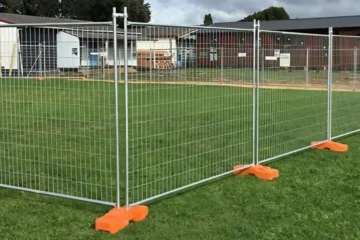Sodding for erosion control

Erosion, the gradual wearing away of soil by water, wind, or other natural forces, poses a significant threat to landscapes and ecosystems. It leads to the loss of fertile topsoil, which is crucial for plant growth, and can result in degraded landscapes, reduced agricultural productivity, and increased pollution in waterways. Erosion control measures are essential to prevent these adverse outcomes and protect the environment.
The Role of Sodding in Erosion Control
Sodding, the process of transplanting mature turfgrass that has been pre-grown elsewhere, is an effective strategy for immediate erosion control. Unlike seeding, which requires time for germination and establishment, sodding offers an instant ground cover that can significantly reduce soil erosion. This method is particularly valuable in areas where rapid stabilization is necessary, such as construction sites, steep slopes, and riverbanks.
Benefits of Using Sod for Erosion Control
Sod provides a dense and uniform grass cover that can immediately withstand erosion forces from rain and wind. It helps to absorb water, reducing runoff and filtering pollutants before they enter waterways. Additionally, sodding promotes the development of a healthy root system, which further stabilizes the soil and prevents erosion. This immediate ground cover also enhances aesthetic appeal, making it a popular choice for both residential and commercial landscapes.
Implementing Sodding for Erosion Control
Site Preparation and Selection
Effective erosion control through sodding begins with proper site preparation. It involves clearing the area of debris and weeds, grading the soil to the desired contours, and ensuring good soil contact for the sod roots. Selecting the right type of sod is crucial, as different grass species have varying tolerance levels to drought, shade, and foot traffic. Consulting with local experts or extension services can help determine the best sod type for specific site conditions.
Sodding Techniques and Best Practices
Laying sod requires careful planning and execution. Begin by laying sod strips along the perimeter of the area and then filling in the center, ensuring that the edges of the sod strips fit tightly together to prevent gaps. Staggering the joints in a brick-like pattern can enhance stability and appearance. It’s also important to roll the sod after installation to ensure good soil contact and to water it thoroughly to promote root establishment.
Maintenance and Care After Installation
Proper maintenance is vital for the newly installed sod to thrive and effectively control erosion. This includes regular watering, especially in the first few weeks after installation, to encourage deep root growth. Fertilization and mowing according to the specific needs of the grass species are also critical to maintain a healthy and dense turf that can resist erosion. Over time, as the sod establishes, it will become more resilient and require less intensive care.
Advanced Strategies in Sodding for Erosion Control
Innovative Erosion Control Techniques
Advancements in erosion control technology have led to the development of hybrid sodding methods, such as the integration of biodegradable mats or nets with traditional sod. These innovations provide extra support to the sod and soil, enhancing the stability of the area and offering better protection against erosion. Additionally, incorporating native grass species into sod mixes can improve the ecological benefits of sodding, promoting biodiversity and resilience against pests and diseases.
Case Studies and Success Stories
Analyzing successful sodding projects can provide valuable insights into effective erosion control practices. Case studies often highlight the importance of comprehensive planning, species selection, and post-installation care. Projects in areas prone to heavy rains or on steep slopes demonstrate how sodding can be a critical component in preventing soil loss and protecting water quality.
Future Directions in Sodding and Erosion Control
As environmental concerns grow, the role of sodding in erosion control is likely to evolve. Research into drought-resistant and low-maintenance grass varieties could expand the applicability of sodding in different regions and climates. Furthermore, integrating sodding with other sustainable practices, such as rainwater harvesting and permaculture design, can enhance the effectiveness of erosion control measures and contribute to healthier ecosystems.
Conclusion
Sodding offers a robust solution for immediate and effective erosion control across various landscapes. From its ability to provide instant ground cover to its role in enhancing water filtration and soil stability, sodding is an invaluable tool in environmental management. By understanding the principles, techniques, and maintenance practices associated with sodding, property owners, and environmental stewards can significantly mitigate the impacts of erosion, protecting soil health, water quality, and biodiversity for future generations.
Leave a reply
You must be logged in to post a comment.











